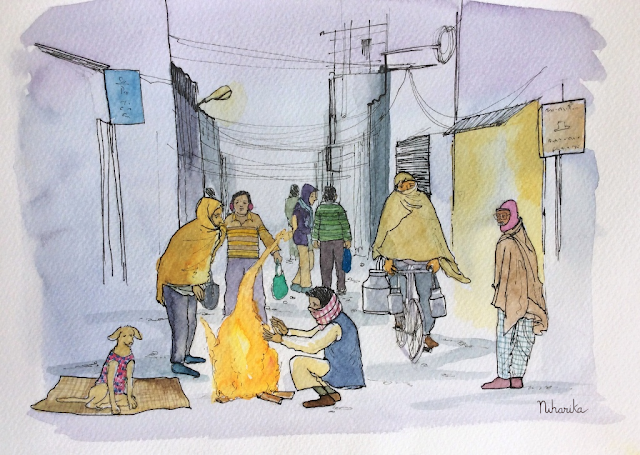The Signalman of Hoshangabad

It has been so common for trains to arrive late in Hoshangabad and Itarsi that it makes me nervous to see one that is actually on time. It is as though something is not right with the journey if the train is not late by at least three hours! Once, we even had to stay overnight in Itarsi because the train was late by over 10 hours. Anyway, late trains mean more time for sketching and observing people. Indian railway stations are full of interesting characters, each one unique and with a fascinating history, if you get to speak to them. I scouted for an ideal subject in the hot, dusty train station at Hoshangabad, sketching the man on the opposite platform taking a nap. Close to me, a man in uniform waved the green flag to a passing train that thundered through the station. I didn’t pay much attention to him. But after a while I had to. It is common in India to be openly curious about something and hover around. And that is what he did. He hovered behind me while I tried to




